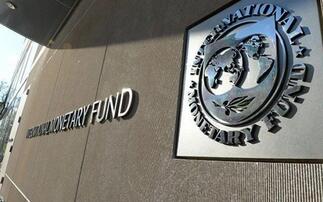Rising labour costs and increasing US-China trade tensions is resulting in some companies relocating production lines out of China. Fidelity Emerging Asia Fund portfolio Manager Dhananjay Phadnis looks at how ASEAN will be a key beneficiary of this trend.
It is now well understood that China is fast losing its tag as "the world's factory" as it continues its transition towards a higher value consumption driven economy. Against a backdrop of increasing US-China trade tensions, this trend has started to attract increasing levels of attention as more companies are now shifting - or looking to shift - their production lines out of China to avoid trade restrictions and higher tariffs.
Being close to companies here in Asia, we have been witnessing this trend for a number of years. The ongoing trade issues potentially provide another rationale for diversification of manufacturing base, but this is a process which has been well underway and has been driven by demographic factors such as rising labour costs and a decline in China's working age population.
If we study the history of industrialisation, we notice that manufacturing bases keep shifting to places with comparative advantages. For instance, the UK was the textile factory of the world in the 19th century, but by the 20th century the US started to dominate due to technological innovations and the advent of synthetic yarns. But as costs in the US increased, production shifted to Hong Kong and China.
Working age population (20-64yrs - in millions)
Source: World Population Prospects 2019.
Many other industries have seen a similar trend, ending up in China, which offered a large working age population ready to work at lower wages, and a government that invested in infrastructure and provided a favourable regulatory regime.
Lately, an ageing and increasingly costly China has been losing this advantage. Hence, it is not surprising that manufacturers in China, including Chinese companies, have incrementally been adding capacity outside of China. The latest beneficiaries of this trend are countries such as Vietnam, Cambodia, Indonesia, India and Philippines. The chart above shows that the working age population in these countries will increase in the next 25 years as China continues to age.
A good example of this shift in production base is Hong Kong-listed Shenzhou International, a vertically integrated knitwear manufacturer of sportswear and casual wear, and a major supplier to renowned brands such as Nike and Adidas. Shenzhou has been adding capacities in Vietnam and Cambodia for several years now. It is also actively looking at certain parts of the Philippines and Indonesia for capacity additions to further diversify its production base as highlighted in the charts below.
Share of Shenzhou International's production volume by geography
Source: Company reports, Fidelity International, September 2019.
Notably, Vietnam has seen a 70% jump in the number of foreign direct investment (FDI) projects in the last five years (2013-18) and a 66% rise in investment capital over the same period. New projects are well diversified across sectors, including electronics, textiles and auto-components and aerospace, and investing countries include China, Singapore, Japan and Korea.
Similarly, India has seen investments from technology giants such as Samsung Electronics and Hon Hai Precision Industries. Last year, Samsung opened a new factory in Noida on the outskirts of New Delhi, which the Korean company says, is the world's biggest mobile phone manufacturing plant. Hon Hai Precision has set up a plant in India's southern city of Chennai to manufacture Apple's latest iPhone models. The company already has two assembly units in India where it makes devices for Xiaomi and Nokia.
Looking ahead, we expect manufacturing to continue to shift to countries with abundant low-cost labour. ASEAN and India will be the key beneficiaries of this trend. This should lead an increase in new foreign direct investment in these parts of Asia, boosting exports, supporting domestic consumption and helping the region from both an economic and investment perspective. We continue to find attractive long-term investment opportunities in the region as well as in frontier markets such as Vietnam and Sri Lanka. China, in the meantime, will continue to transition towards higher value-added manufacturing and services. This transition will also throw up some interesting investment opportunities.
Further information
This feature comes from a new series of Asia focused thought-leadership from Fidelity. You can view more content covering a broad range of investment ideas from across the region from the links below.
Fidelity Emerging Asia Fund W-ACC-GBP
A different perspective on Asia
This information is for investment professionals only and should not be relied upon by private investors.
The value of investments can go down as well as up so investors may get back less than they invest. Past performance is not a reliable indicator of future returns. Investors should note that the views expressed may no longer be current and may have already been acted upon. The Fidelity Emerging Asia Fund can use financial derivatives which may expose it to a higher degree of risk and can cause investments to experience larger than average price fluctuations. Investments in small and emerging markets can be more volatile than other more developed markets. Changes in currency exchange rates may affect the value of investments in overseas markets. Reference to specific securities should not be construed as a recommendation to buy or sell these securities and is included for the purposes of illustration only. Investments should be made on the basis of the current prospectus, which is available along with the Key Investor Information Document and current and semi-annual reports, free of charge on request, by calling 0800 368 1732. Issued by Financial Administration Services Limited and FIL Pensions Management, authorised and regulated by the Financial Conduct Authority. Fidelity, Fidelity International, the Fidelity International logo and F symbol are trademarks of FIL Limited. UKM1019/24798/SSO/NA













